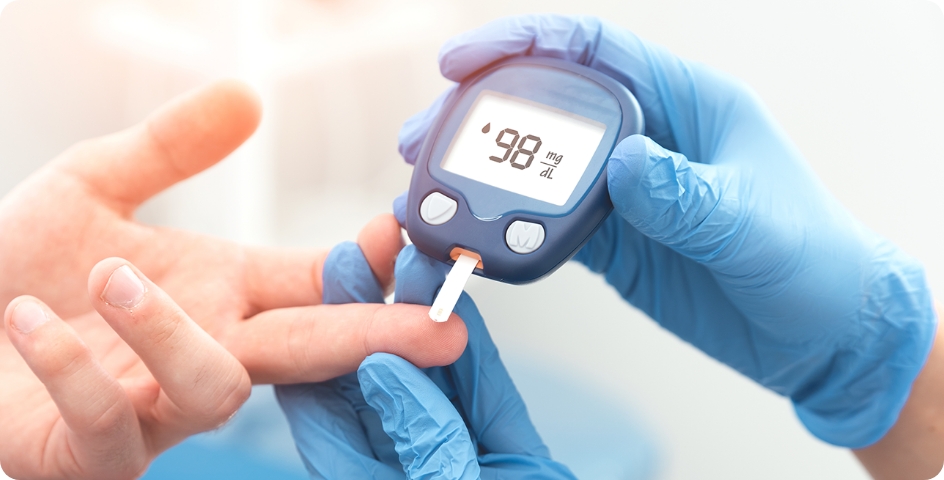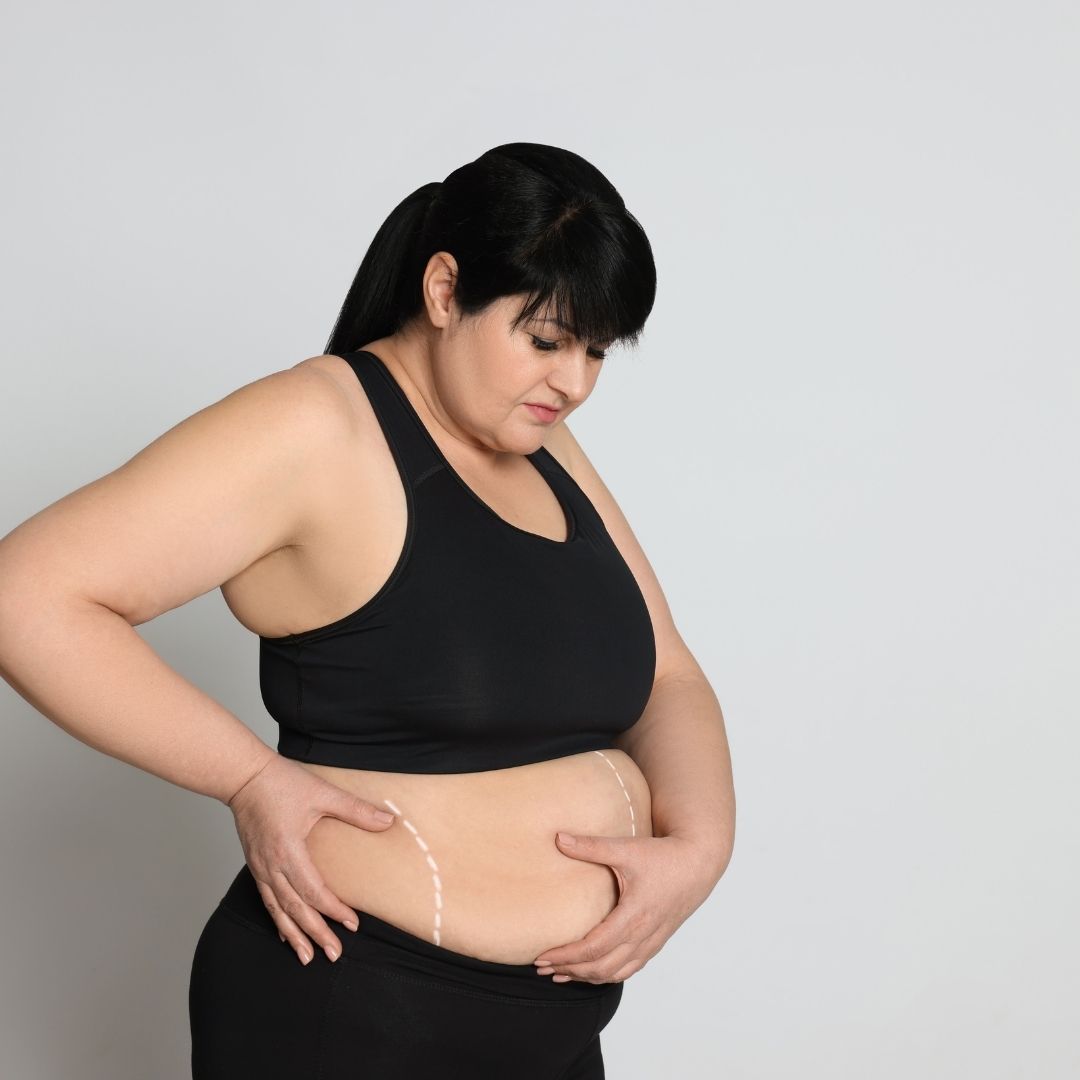
Type 2 Diabetes and Diet
If you were diagnosed with type 2 diabetes, the prospect of giving up the foods you love may seem daunting. But you will be relieved to discover that a good diet for type 2 diabetes isn’t as tricky as you fear and that you can still find joy in food while managing this disease. A healthy diet is a pillar of a successful diabetes management plan, and other pillars include taming stress, exercising regularly, and taking any medications as prescribed.
What Foods Should I Eat If I Have Diabetes?
You can worry that having diabetes means going without foods you enjoy. The good news is that you can still eat your favorite foods, but you may need to eat smaller portions or enjoy them less often. Your healthcare team will help create a diabetes meal plan for you that meets your needs and likes. The key to healthy eating with diabetes is to eat a variety of healthy foods from all food groups, in the amounts your meal plan outlines.
The food groups are:
Vegetables
Nonstarchy: Broccoli, carrots, greens, peppers, and tomatoes
Starchy: Potatoes, corn, and green peas
Fruits: Oranges, melon, berries, apples, bananas, and grapes
Grains
At least half of your grains for the day should be whole grains. For example, wheat, rice, oats, cornmeal, barley, and quinoa
In this syndrome, a part of your heart temporarily enlarges and doesn’t pump well, while the rest of your heart functions normally or with even more forceful contractions.
Protein
lean meat
chicken or turkey without the skin
fish
eggs
nuts and peanuts
dried beans and certain peas, such as chickpeas and split peas
meat substitutes, such as tofu
Dairy-nonfat or Low Fat
milk or lactose-free milk if you have lactose intolerance
yogurt
cheese
Eat foods with heart-healthy fats, which mainly come from these foods:
oils that are liquid at room temperatures, such as canola and olive oil
nuts and seeds
dried beans and certain peas, such as chickpeas and split peas
heart-healthy fish such as salmon, tuna, and mackerel
You should use oils when cooking food instead of butter, cream, shortening, lard, or stick margarine.
Foods to Avoid in Type 2 Diabetes
Diabetes can increases your risk of heart disease, and stroke by accelerating the development of clogged and hardened arteries. Foods containing the following work against your goal of a heart-healthy diet.
Trans fats: You should avoid trans fats found in processed snacks, baked goods, shortening, and stick margarine.
Cholesterol: Cholesterol sources include high-fat dairy products and high-fat animal proteins, egg yolks, liver, and other animal organ meats. You should consume no more than 200 milligrams (mg) of cholesterol a day.
Sodium: You should consume less than 2,300 mg of sodium a day. Your doctor may suggest you consume even less if you have high blood pressure.
Saturated fats: Avoid high-fat dairy products and animal proteins such as butter, beef, sausage, and bacon. Also, you should limit coconut and palm kernel oils.

Meal Plan Methods
Two common ways to help you plan how much to eat if you have diabetes are the plate method and carbohydrate counting. You can check with your healthcare team about the method that’s best for you.
Plate method
The plate method helps you control your portion sizes, and you don’t need to count calories. The plate method shows the amount of each food group you should eat, this method works best for lunch and dinner.
In this method, use a 9-inch plate. Put nonstarchy vegetables on half of the plate; meat or other protein should be on one-fourth of the plate; and a grain or other starch on the last one-fourth. Starches include vegetables such as corn and peas. You also can eat a small bowl of fruit or a piece of fruit, and drink a small glass of milk as included in your meal plan.
Portion sizes
You can use everyday objects or your hand to calculate the size of a portion.
1 serving of meat or poultry is approximately the palm of your hand or a deck of cards
1 3-ounce serving of fish is a checkbook
1 serving of cheese is approximately six dice
1/2 cup of cooked rice or pasta is a rounded handful or a tennis ball
2 tablespoons of peanut butter are approximately a ping-pong ball
Carbohydrate counting
Carbohydrate counting involves keeping track of the number of carbohydrates you eat and drink each day. Because carbohydrates turn into glucose in your body, these affect your blood glucose level more than other foods do. Carb counting can help you manage your blood glucose level, if you take insulin, counting carbohydrates can help you know how much insulin to take. Carb counting is a meal planning tool for people with diabetes who take insulin, but not all people with diabetes need to count carbohydrates. Your healthcare team can help you create a personal eating plan that will best meet your needs.
To count carbohydrate grams in what you eat, you’ll need to:
You should learn which foods have carbohydrates
Read the food label, and learn to estimate the number of grams of carbohydrates in the foods you eat
Add the grams of carbohydrate from each food you eat to get your total for each meal
Most carbohydrates come from starches, fruits, milk, and sweets, therefore try to limit carbohydrates with added sugars or those with refined grains, such as white bread and white rice. Instead, you can eat carbohydrates from fruit, vegetables, whole grains, beans, and low-fat or nonfat milk.
Consult the experts
Connect with your primary doctor and a registered dietitian nutritionist (RDN) who is also a certified diabetes care and education specialist (CDCES).
Sweeten things up with fruit
To satisfy your sweet tooth, you can opt for fruit in moderation. Research shows that eating berries, apples, and pears is associated with weight loss. Diabetes-friendly fruits tend to be especially fiber-rich choices. All other fruits count, too, just be sure to factor them into your carbohydrate servings.
Beware of sauces
Many condiments include sugar, like ketchup, barbecue sauce, and marinades. You should read the label, and choose the lower-sugar option that best fits your diet and goals.
Don’t skip breakfast
Breakfast is a habit of long-term weight loss. Plain yogurt with fruit; nuts and fruit; or scrambled eggs and whole-grain toast are all diabetes-friendly breakfasts option that will set up your daily blood sugar management for success.
Simplify beverages
Instead of reaching for sweetened drinks, opt for water, unsweetened tea, and coffee.
Don’t fear grains
They’re a great source of heart-healthy fiber, and you should aim to make at least half of your grain intake whole grains when you’re managing type 2 diabetes. Diabetes-friendly options include brown rice, quinoa, 100 percent whole-wheat bread, whole-grain pasta, and barley.
Add fiber to your diet
Fiber isn’t digested by the body, so fiber-rich foods with carbohydrates do not raise blood sugar levels as quickly because they are processed more slowly. Fiber-rich foods can also help you feel fuller for longer.
Choose dairy mindfully
You should opt for nonfat or low-fat (1%) with milk, cottage cheese, and plain yogurt. Remember that while these sources offer protein, they are also another source of carbs, so you need to factor them into your carb allotment. Unsweetened nondairy milk, such as soy and almond milk, is also diabetes-friendly.
The Study of Type 2 Diabetes and Diet Relationship
A recent study published in the Journal of Diabetes Care conducted a comprehensive analysis of dietary patterns in individuals with type 2 diabetes. The study found that a balanced diet rich in whole grains, vegetables, and lean protein sources not only helped in blood sugar management but also contributed to long-term weight loss. Additionally, the research emphasized the importance of portion control, as it showed that individuals who practiced portion management experienced better blood sugar control. This study underscores the significance of a well-rounded diet in managing type 2 diabetes.
Conclusion About Type 2 Diabetes Diet
Whichever diet you choose to follow, it’s best to eat a full variety of nutrient-rich foods and practice portion management. As a general guide, your diet should include a good variety of vegetables, and sources of unsaturated fats such as nuts, avocados, and oily fish, while processed foods should be avoided. Healthy Türkiye’s doctors or dietitians can also help you develop a sustainable meal-planning approach that fits your health needs and lifestyle.



